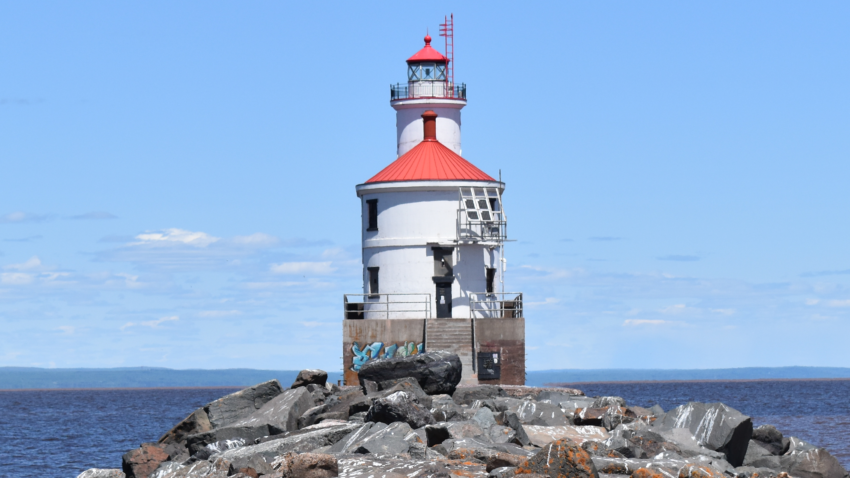Wisconsin Public Radio’s upcoming programming realignments will end a once-vital connection between the Superior region and the rest of the state: the Ideas Network.
A uniquely Wisconsin format, the Ideas Network was born in 1990 as an alternative to the NPR news magazines that air on WPR’s other network. It originally consisted of live call-in talk and interview programs throughout the day. Wisconsin-based hosts interviewed politicians, newsmakers, experts, novelists, and more.
Listeners could hear voices from around the state — and carriage of the Ideas Network on KUWS/91.3, which began a few years after the network launched, also brought in a good number of calls from northeastern Minnesota. Herb from Finland, Minn., was a legend on the Ideas Network in the 1990s.
(I learned how to pronounce many of Wisconsin’s unique place names by listening to the Ideas Network as a student worker at KUWS. The job led to a career in the news media.)
As it turned out, the Ideas Network was the perfect solution for KUWS. Not only did it provide northwestern Wisconsin residents a connection to their state in a region otherwise dominated by Minnesota media, it also offered an alternative to the national programming already available from Minnesota Public Radio.
WPR’s unique programming strategy worked well with its patchy broadcast coverage and differing competitive situations from city to city. The News & Music network offered public radio mainstays in places that could only receive one FM NPR station, while the Ideas Network could air in places where long-form NPR programs were already available on other stations. The situation became more complicated as WPR added smaller stations to fill in coverage gaps.
The Twin Ports became a public radio wonderland, with six public radio services and three different long-form news options available during drive time. (Though NPR’s national programs both air on MPR and WPR, MPR’s heavy reformatting of the show makes it a different program much of the time.)
However, the amount of long-form news programming will greatly shrink on May 20. The Ideas Network will leave the air as WPR shifts to the more common public radio model of one service that is all news and another which is all music.
KUWS will become the second major Classical music station in the Twin Ports, competing with MPR’s existing 24-hour Classical service. The new WPR News service, a consolidation of news programming currently split across its two networks, will air on the weaker signal of WSSU/88.5 and the more rural signal of WHSA/89.9 from Brule.
On the new WPR News, there will be three daily hours of live state-originated programming, less than a third of what was offered at the peak of the Ideas Network and half of what is currently offered. While the switch may make sense from a statewide perspective, it will be a far cry from the Wisconsin connection that was once offered to Superior.
Unfortunately for Superior listeners seeing a Wisconsin alternative, the new WPR News lineup has a lot in common with MPR News. Besides the partial simulcast of “Morning Edition” and “All Things Considered,” the two networks will also be airing “1A,” “On Point,” and “Fresh Air” at the same time and will carry the BBC World Service simultaneously overnight.
Because of the region’s topography, WPR’s two Superior stations both transmit from the Duluth antenna farm, meaning everyone who can receive KUWS and WSSU can also receive MPR News and Classical MPR.
In response to several questions at a recent session about the changes in Superior, WPR Director Sarah Ashworth made clear that the goal is to make it easier for listeners to find WPR News content, stating that research found listeners believe stations should just stick to one type of programming and not mix news and music as they do now. KUWS will continue to air student-produced music programming in the evening.
At the event, I asked Ashworth why the decision was made to put a Classical format on the larger signal of KUWS when Classical MPR is already carried on another major Twin Ports signal. Ashworth said the network saw greater potential for serving the Minnesota parts of KUWS’ wider coverage area with the (second) Classical format than for News.
With KUWS no longer airing long-form news, will Superior listeners find the new WPR News on the weaker WSSU/WHSA signals? Or will they spend more time with the familiar voices from Minnesota?
When listeners in Superior turn on their radio, they’re far more likely to find regional news reports on MPR because the Minnesota-based network simply has a much larger budget to create more content to air within national news magazines.
The reports on MPR News include coverage from just over the border in northeastern Minnesota, environmental topics of regional interest, and live breaking news and weather coverage. There’s even occasional reporting from northwestern Wisconsin.
WPR also features excellent reporting, including journalism from two KUWS alums. The content previously produced for several now-canceled regional public affairs programs will be converted into shorter-form reports to air within “Morning Edition,” so there will be more Wisconsin news in that timeslot.
But with all of the offerings coming across the border, it’s an uphill battle to get people in northwestern Wisconsin to pay attention to their own state. Reducing the amount of Wisconsin content and moving it to a weaker signal in Superior will only make that battle even harder.
As a longtime public radio fan and a Wisconsin resident for most of my adult life, I hope they can find a way to make it work.

